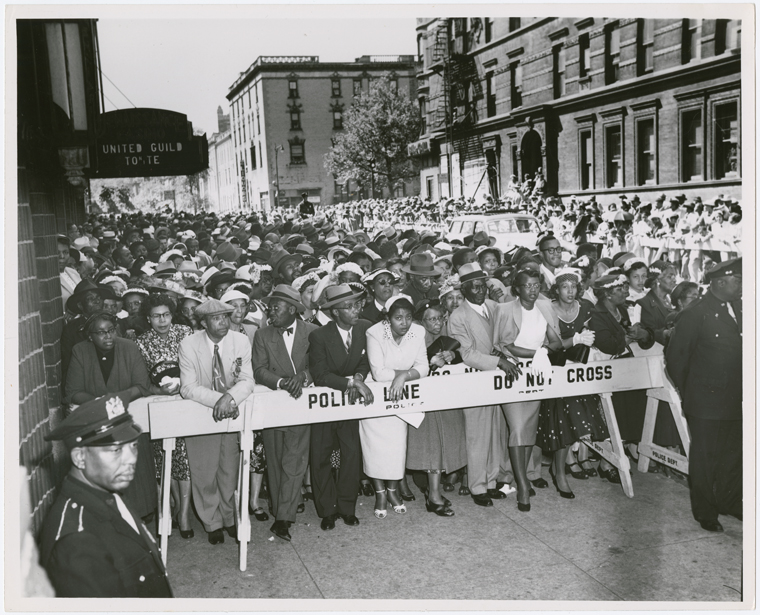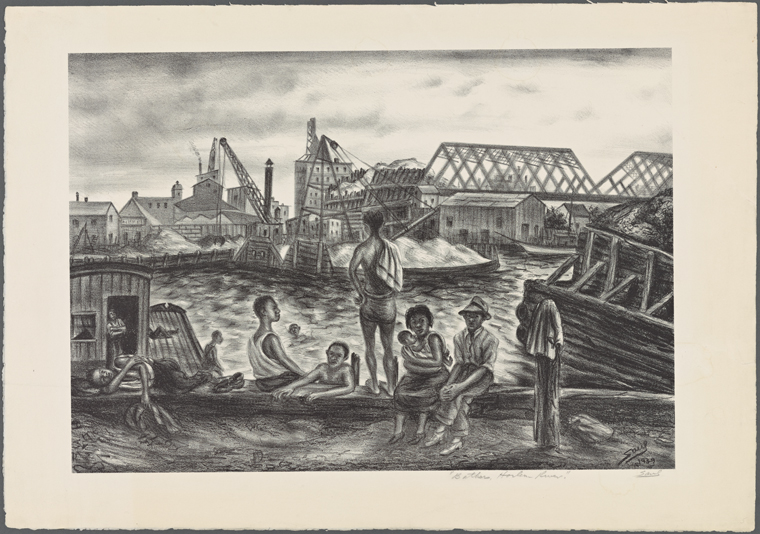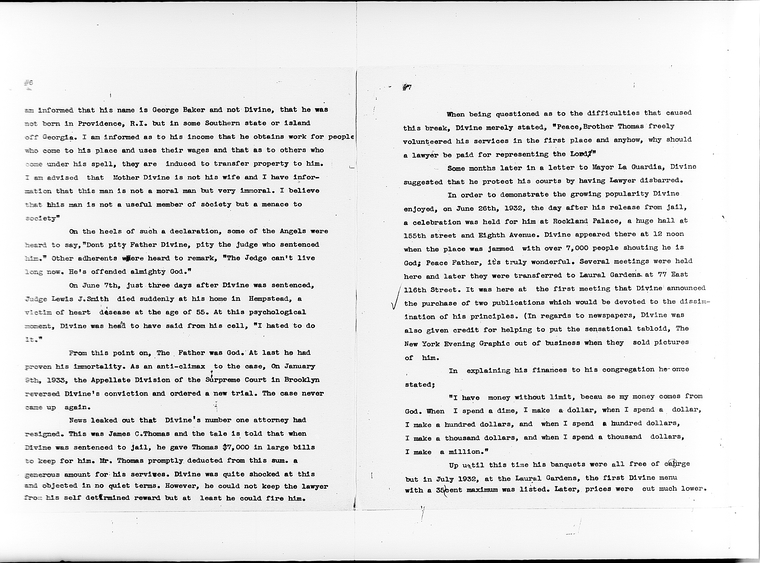Schomburg Archivists Take Your Questions On #AskAnArchivist Day
The Schomburg Center for Research in Black Culture is excited to celebrate Ask An Archivist Day on Wednesday, October 5. Archivists from around the world volunteer to answer questions posed by the public on Twitter. This day is to encourage people to ask archivists questions about their profession and the collections in their institutions.
The Schomburg Center will have two archivists, Miranda Mims and myself, from the Manuscripts, Archives, and Rare Books Division available to answer all of your burning questions. Start planning your question and don’t forget to log onto Twitter on Wednesday, and direct your inquiries to @SchomburgMARB. We will be live from 11 AM to 2 PM. Ask us any questions you may have about collections, best practices, and the archival profession.
For a sneak peak, I’ve asked four professionals from various division at the Schomburg Center questions about their specializations. They have shared details on their experience handling unique materials throughout their career.
Kay Menick has been the Digital Curatorial Assistant for the Schomburg Center for the past two years. She received her MLIS from Pratt Institute. Prior to NYPL, she worked for Art Resource, the New York Philharmonic Archives, the Green-Wood Cemetery Archives, and in publishing.
What is the role of the Digital Curatorial Assistant?
At its most fundamental: I get things onto NYPL's Digital Collections site. In practice, this means assessing, selecting, and organizing collections, creating metadata, and researching (and sometimes clearing) copyright.
Can you describe the digital collections you’re working on?
I'm currently working on two main collections: the NYPL Children's Bibliographies & Books, and the Works Progress Administration Photographs.
The first is a series of bibliographies published by the NYPL and a few other organizations, highlighting children's and young adult books featuring African-American protagonists, authors, or subjects, and generally not playing into negative stereotypes. The bibliographies were originally created by Augusta Baker—who worked at what is now the Countee Cullen Library and was the first African-American in an administrative position at NYPL—as Books About Negro Life for Children in 1946. In addition to the bibliographies themselves, we are also digitizing as many of the listed books as we can, copyright allowing.
The second project is the digitization of all the photos from our Photographs & Prints Division that were taken under the auspices of the WPA. These cover a range of subjects, from education, to street scenes, to art and artists, to theater, etc. This project continues my work on the digitization of WPA collections, which began with the Prints from our Art & Artifacts Division, and continued with the Writers' Program from the Manuscripts, Archives, & Rare Books Division.
Andrea Battleground is the Reference and Outreach Librarian for the Moving Image and Recorded Sound Division. She received her MLIS with an emphasis on Digital and Special Collections. She is also a digital content manager, editor, and writer whose cultural commentary has appeared in The A.V. Club, BuzzFeed, and Uncovered Classics.
What experience do you need to help preserve Moving Images and Recorded Sound?
There are several types of positions within audiovisual archives. As with other archival positions, a master’s degree in library or information science, archival studies, or museum studies is often required, but a further level of specialization is also useful. This may be in the form of a certification for media preservation or an additional degree in moving image preservation or media studies. Experience is also an excellent education. My previous experience cataloging and writing for an audiovisual archive, along with my passion for film history was instrumental in obtaining a reference archivist position. As with so many things, what is often the most indelible is a passion for the mission and subject matter.
Most impressive items in your collection?
Wow, where to begin? We have the entire run of the dramatic radio program, New World A-Coming, which aired in the 1940s and featured several actors from the American Negro Theater. We have several of the video interviews used in the film James Baldwin: The Price of the Ticket. We have the audio interviews David Levering Lewis conducted as he researched his Harlem Renaissance book When Harlem was in Vogue. The C.L.R. James Lectures and Interviews Collection features talks James recorded throughout the 1960s. Indie filmmaking pioneer William Greaves's collection is here. Another treasure that was uncovered recently is a rare film from 1937, featuring the Schomburg Center’s founding curator, Arturo Schomburg. But it’s also really nice to find commercial items that may have fallen out of print. They were readily available once, but are less accessible now, like the TV productions of The Women of Brewster Place and For Colored Girls Who Have Considered Suicide, or films like Cheryl Dunye’s The Watermelon Woman, or Ava DuVernay’s Black Girls Rock documentary about women in hip-hop, My Mic Sounds Nice. Those were all pretty impressive to me. I’m impressed and inspired here every day.
Megan Williams is originally from the Midwest and moved to the East coast in 2011 to pursue a career in archives and libraries, with a particular focus on visual materials and an interest in modern and contemporary African-American art. She currently serves as the Reference and Outreach Librarian at the Photographs at Prints Division since March 2016.
What do you enjoy most working with photographs and print?
I love to learn the stories behind the images. Some are mysterious and we can only speculate about what they depict, while others arrive in collections that provide plenty of detail and context. Since I am still fairly new, there is so much to discover and with every new researcher comes a different collection to learn about and explore.
What was the most recent collection you assisted as a researcher with?
Earlier this week a scholar was looking for images of Haile Selassie, the emperor of Ethiopia from 1930 to 1974, from a 1954 visit he made to Harlem and the historic Abyssinian Baptist Church. We have images of this event in our popular Austin Hansen Collection. Austin photographed Harlem life, including its churches, extensively, and in one image, he chronicles a large and expectant crowd waiting for Emperor Selassie outside of Abyssinian Baptist Church.

Natiba Guy-Clement, born and raised in Trinidad, immigrated to Harlem, NY where she began working at the Schomburg Center as a library page in the Jean Blackwell Hutson, Research and Reference Division. She went on to work with the audiovisual collections at the Schomburg, as a Library Technical Assistant. Her profound interest in Black and Caribbean history and culture and her love for working with special collections motivated her to obtain her MLIS, with distinction, from Pratt Institute. Currently, Mrs. Guy-Clement serves as the Reference and Outreach Archivist of the Manuscripts, Archives, and Rare Books Division.
What is your favorite collection you’ve processed?
My favorite collection was also the first collection I ever organized. It was about Father Divine and his "International Peace Mission Movement." Father Divine was an interesting individual and some might say he was a bit controversial. He founded the International Peace Mission Movement which lists among its teachings that Father Divine was God. Father Divine and his movement were quite progressive in its time and did a lot for the community. The collection contained mostly audio material in the form of open reel tapes and wire recordings. There were also some photographs which can be found in the Father Divine Portrait Collection in the Photographs and Prints Division, as well as, transcripts of his sermons and radio programs and letters between Father Divine and one of his disciples which are in the Father Divine Collection housed in the Manuscripts, Archives, and Rare Books Division. It a very rich collection because of the many different formats. Its a collection that you can hear, see, and read.
What has been the most memorable moment while working at the Schomburg Center?
I started working at the Schomburg Center in 1999 and I've had so many memorable and amazing moments throughout the years. From chatting with Ruby Dee while she was rehearsing and performing in her one woman play My One Good Nerve right here in the Langston Hughes Auditorium at the Schomburg to listening to Maya Angelou speak about her relationship with James Baldwin when her collection was acquired. There were so many similar moments like this that made me cherish being in a space like this, and getting to spend my day in an archive, with all of its gems, is truly a blessing.
Read E-Books with SimplyE
 With your library card, it's easier than ever to choose from more than 300,000 e-books on SimplyE, The New York Public Library's free e-reader app. Gain access to digital resources for all ages, including e-books, audiobooks, databases, and more.
With your library card, it's easier than ever to choose from more than 300,000 e-books on SimplyE, The New York Public Library's free e-reader app. Gain access to digital resources for all ages, including e-books, audiobooks, databases, and more.
If you don’t have an NYPL library card, New York State residents can apply for a digital card online or through SimplyE (available on the App Store or Google Play).
Need more help? Read our guide to using SimplyE.


Comments
World War Two Posters of Black pin-up girls
Submitted by Blayne S. Gower (not verified) on November 2, 2016 - 11:07am